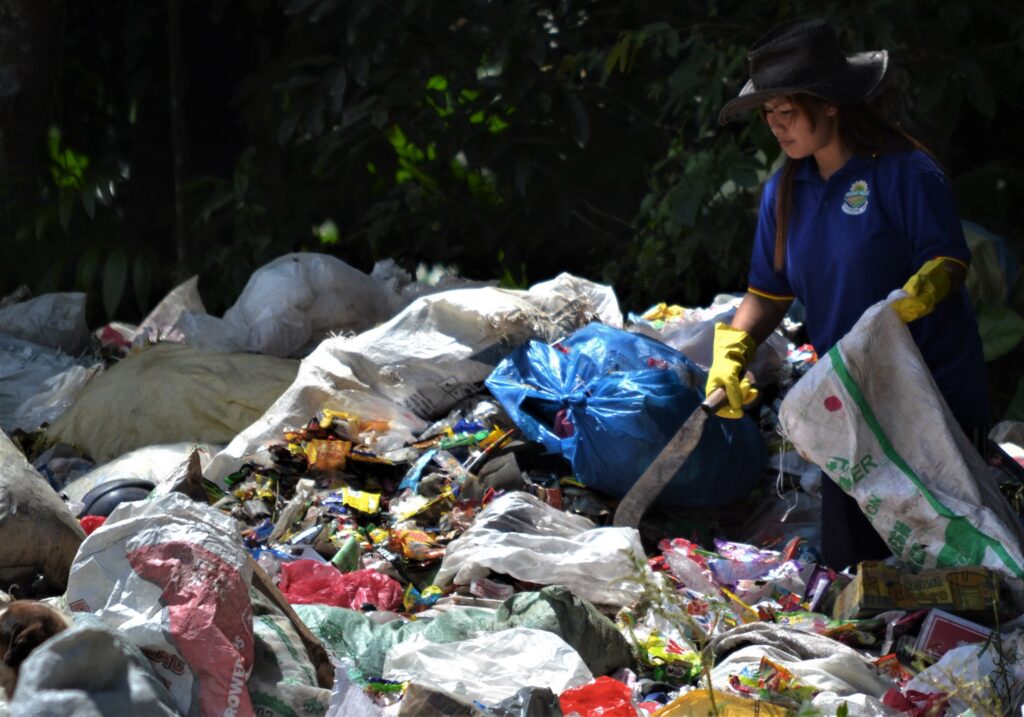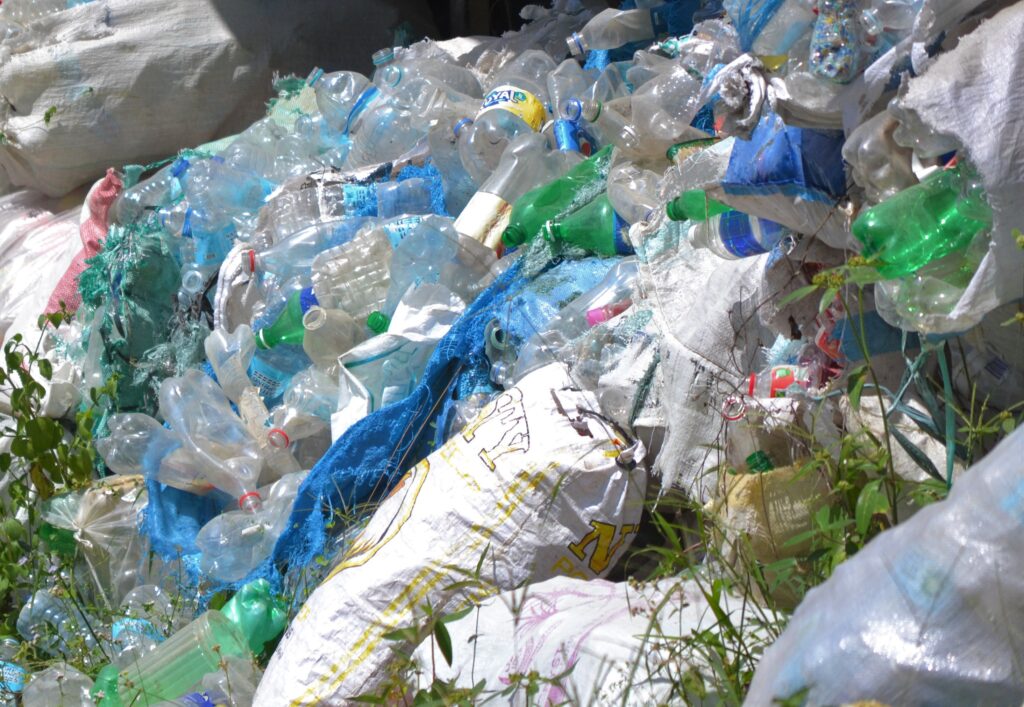Text and Photos by Henrylito D. Tacio
“The greatest environmental challenges facing the world.” That was how British Prime Minister Theresa May described those single-use plastic items like plastic bags, straws, and coffee stirrers.
“We have to confront this material and our use of it, because so much of it is single-use disposable plastic and this is a material that doesn’t go away. It doesn’t return to the planet the way other materials do,” Sherri Mason, chair of geology and environmental sciences at the State University of New York at Fredonia, told Associated Press.
In Davao City, Councilor Diosdado Mahipus, Jr. seemed to heed the plea. He has proposed to reduce the use of single-use plastics (SUPs), which are “disposable plastics” and plastic products “conceived, designed, or placed on the market to be used only once over a short time span before being disposed or discarded.”
In the proposed Single-Use Plastic Regulation Ordinance 202, ten items were prohibited in Davao City. These are: drinking cups (recyclable or non-recyclable), plastic condiments (sauce or gravy container), plastic cup lids or covers, plastic stirrers, plastic straw, plastic cutleries (like spoon, fork, or knife), plastic meal packaging, plastic hand gloves, plastic materials used as buntings, and plastic materials used as balloon stick whether recyclable or non-recyclable.
“So far, these are the 10 plastics covered by the ordinance, which means that those not mentioned can still be used,” Chinkie Golle, executive director of Interface Development Interventions (IDIS), was quoted as saying by EDGE Davao in a news report written by Maya M. Padillo.

Not included in the list are plastic bags, which come in different colors, sizes, forms, and weights. “The continued use of plastic bags has created many problems, foremost of which is the way they take up landfill space, where it will stay intact into the next few millennia,” said Davao City Councilor in 2012.
“Since they were introduced in the 1970s, plastic bags have infiltrated our lives,” wrote Caroline Williams in New Scientist. “Globally, we carry home between 500 billion and a trillion every year – about 150 bags for every person on earth, or to put it another way, a million every minute and rising.”
The country’s so-called “sachet economy” has contributed to the proliferation of plastics. Products sold in single-use sachets include instant coffee, shampoo, soy sauce, cooking oil, food seasoning, and toothpaste.
“Because they are easy to sell – ribbons of single-use products hang from neighborhood stores even in the most remote communities – large multinational manufacturing companies continue to market them,” the World Wide Fund for Nature (WWF) observes.
According to one research group, the Philippines discards 60 billion plastic sachets each year. That’s about one sachet per person per day on a per capita basis.
“The problem with plastics has been escalating for decades, and the Philippines has been identified as the world’s third-largest contributor of plastics in the ocean,” WWF said. “Plastic pollution has always been a huge issue in the Philippines with the continuous generation of plastic wastes and poor waste management.”
About 35,800 tons of garbage, which include plastics, are generated each day by Filipinos, according to a position paper written by Alicia Castillo and Suchiro Otoma. “On average, each person in the country produces about 0.5 kilograms and 0.3 kilograms of garbage every day in the urban and rural areas, respectively.”

Another report – from the National Solid Waste Management Commission and the World Bank – said 2.27 million tons of garbage are collected every year out of the 2.7 million tons produced. “Of this, 386,000 tons are still leaked into the ocean,” the report said.
“An absence of garbage collection services in secondary cities and many of the country’s smaller islands is largely to blame for the overwhelming amount of plastic coming from the country,” Froilan Grate, executive director of the Philippine branch of the Global Alliance for Incinerator Alternatives, was quoted as saying by South China Morning Post.
A news report said SUPs for food and cosmetics are one of the main contributors to plastic waste in landfills and oceans. Around 40% of all plastic produced is used for packaging, and the World Economic Forum estimates that 95% of this is not recycled after its initial use.
That’s horrendous, indeed. “Following the trajectory of plastic production and mismanagement, United Nations reports predicted that by 2050, there will be more plastic in the oceans than there are fish,” Environment Secretary Roy E. Cimatu said in a press statement.
In the award-winning 1967 movie, The Graduate, the character portrayed by newcomer Dustin Hoffman (who received a well-deserved Oscar nomination for Best Actor) asked for some advice on a career direction. “Plastics, my boy. Plastics,” he was told.
Businesses all over the world are heeding the advice. Unknowingly, no one knew at the time the other side of plastics, which are non-biodegradable. “(This means) they don’t decay and become absorbed by the environment,” the press statement explained. “Once discarded, plastic is likely to end up in oceans after being washed down in rivers, flushed down in toilets, or windblown from dumps.”
The UN estimates that there are now 100 million tons of plastic waste in the oceans, with the vast majority coming from land-based sources. The implications are still not well known, but there is growing and alarming evidence that it has begun to disrupt ecosystems and find its way throughout the food chain, including humans.
Plastics “is in our air, our water, our food, our excrement,” Nina Butler, the chief executive officer of More Recycling, a research and consulting company that works with the plastic industry on recycling, was quoted as saying by the media. “It’s very, very pervasive.”
Jonas Leones, a DENR undersecretary for policy, planning, and international affairs, said the effects of plastics could be devastating for marine biodiversity. “Small litters like candy wrappers end up in our oceans,” he said. “It is eaten by marine species, clogging their stomach and causing their death.”
This is very alarming, according to Congressman Loren Legarda. “We’ve been too abusive of our ocean, and our marine ecosystem has been taking all the burden resulting from the misuse of resources.”
Plastics are materials made to last forever. “Disposed plastic materials can remain in the environment for up to 2,000 years and longer,” wrote Barry E. DiGregorio in an article.
Plastics are also hazardous to human health. Two broad classes of plastic-related chemicals are of critical concern for human health: bisphenol-A and additives used in the synthesis of plastics, which are known as phthalates.
Exposure to these two chemicals, said a study conducted by the Arizona State University Biodesign Institute, is linked to cancer, birth defects, impaired immunity, endocrine disruption, and other ailments.
The blatant use of plastics has to stop – now! “Plastics are a clear and present danger to the future of our planet,” declares Celine S. Cousteau, a documentary film director, and producer, explorer, and designer.
Cimatu agrees. “It is high time we refrain from using disposable plastic products that are used in minutes but persist in the environment forever,” he stressed.

